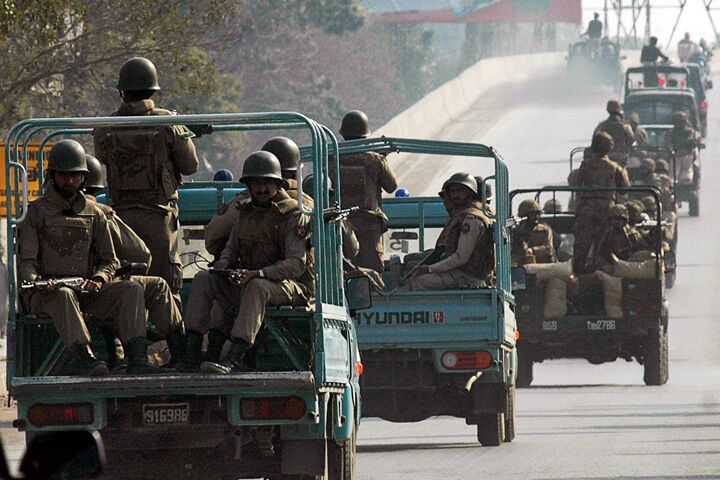
Losing Control in Pakistan?
Reports of retreat by Pakistani troops have surfaced in U.S. media. According to Fox News:
Pakistani troops abandoned an outpost near the border with Afghanistan after receiving threats from Islamic militants who a day earlier overran a nearby fort, an intelligence official and a resident said Thursday.
However, the army immediately denied the report that the post at Saklatoi in South Waziristan had been evacuated by dozens of troops. On Wednesday, militants overran the nearby Sararogha Fort in a pitched nighttime battle that left seven of its garrison dead and a number of troops missing. The British-era fort is one of a string of positions held by the paramilitary Frontier Constabulary along Pakistan’s porous border with Afghanistan.
While this situation highlights some important points, Stratfor points out that they are not quite as dramatic as the media portrays:
Media reports give the impression that these events involve militants wresting control of territory from the Pakistani Army, with troops abandoning their posts in the face of jihadist attacks. However, the ground reality of the facilities, the areas in which they are located and the geopolitical context suggest otherwise. For starters, the outposts in question do not belong to the army. These are outposts of the paramilitary force—the Frontier Constabulary (not to be confused with the more robust but still paramilitary Frontier Corps).
The use of the term “fort” is also misleading in that it connotes a well-guarded facility when, in fact, these are British-era compounds that are not heavily barricaded and are located in desolate terrain. Those manning these posts are paramilitary personnel—locals who are neither decently armed nor well trained, and certainly are not up to the task of counterinsurgency operations. As locals, many of them either do not want to be targets of retribution or do not like the idea of fighting their own people—which would explain why on multiple occasions they have declined to fight. Furthermore, the federal government never directly controlled these territories to begin with. The area has always been known for its lawlessness, but this characteristic gained prominence only after al Qaeda and the Taliban, fleeing the U.S. invasion of Afghanistan, relocated in the area. The Pakistani Army never directly operated in fata until 2003-04. The old system of governance involved political administrator/agents who acted as liaisons between the government and the tribes—making fata an autonomous area of sorts. Thus, in many ways, the Pakistani Army is trying to establish its control over the area for the first time.
Mark Steyn gave some good information about the area in an article nearly two weeks ago:
It’s worth considering what exactly “the interests of the U.S.” are in Pakistan. The most immediate interest is in preventing the country’s tribal lands from becoming this decade’s Afghanistan—a huge Camp Osama graduating jihadist alumni from all over the world. That ship, if it hasn’t already sailed, has certainly cast off and is chugging out the harbor. Something called “the Islamic Emirate of Waziristan” now operates a local franchise of Taliban rule in both north and south Waziristan, and is formally recognized by the Pakistan government in the Islamabad-Waziri treaty of just over a year ago. Officially, the treaty was intended to negotiate a truce, although to those unversed in the machinations of tribal politics it looked a lot more like a capitulation, an interpretation encouraged by the signing ceremony, which took place in a soccer stadium flying the flag of al Qaeda.
Of course, the “Federally Administered Tribal Areas” have always been somewhat loosely governed Federal Administration-wise. In the new issue of The Claremont Review Of Books, Stanley Kurtz’s fascinating round-up of various tomes by Akbar Ahmed (recently Pakistan’s high commissioner in London and before that political agent in Waziristan) mentions en passant a factoid I vaguely remember from my schooldays—that even at the height of imperial power, the laws of British India, by treaty and tradition, only governed 100 yards either side of Waziristan’s main roads. Once you were off the shoulder, you were subject to the rule of various “maliks” (tribal bigshots). The British prided themselves on an ability to run the joint at arm’s length through discreet subsidy of favored locals. As a young lieutenant with the Malakand Field Force, Winston Churchill found the wiles of Sir Harold Deane, chief commissioner of the North-West Frontier Province, a tad frustrating. “We had with us a very brilliant political officer, a Major Deane, who was most disliked because he always stopped military operations,” recalled Churchill. “Apparently all these savage chiefs were his old friends and almost his blood relations. Nothing disturbed their friendship. In between fights, they talked as man to man and as pal to pal.” The benign interpretation of Musharraf’s recent moves is that he’s doing a Major Deane. The reality is somewhat bleaker: Today, even that 200-yard corridor of nominal sovereignty has gone and Islamabad’s political agent is a much shrunken figure compared to his predecessors from the Raj. That doesn’t mean “foreign” influence is impossible in Waziristan. Osama bin Laden is, after all, a foreigner, and so are many of the other al Qaeda A-listers holed up in the tribal lands. Jihadists arrested recently in Britain, Germany and Scandinavia all spent time training in Waziristan, as do Chechen rebels. If another big hit on the U.S. mainland is currently in the works, it’s safe to say it’s being plotted somewhere in Pakistan’s tribal areas.
While the recent success of the Taliban isn’t quite as dramatic as the media make out, it does show just how disordered and out of control certain areas of Pakistan are.
